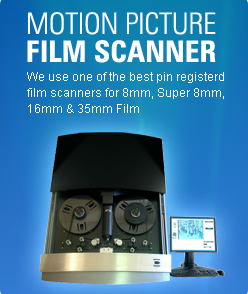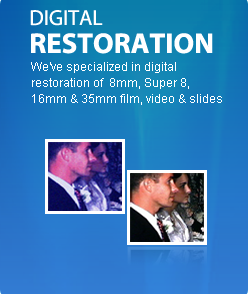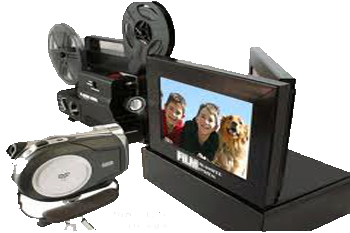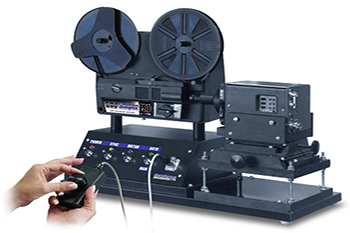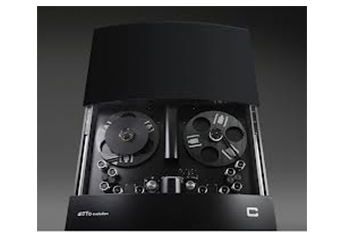
Film Conversion Equipment
Film Scanning and Film Transfer Equipment Types
The type of film scanning machine used for your 8mm, Super 8 or 16mm film conversion will have as much of an impact on the quality you receive as the resolution of the scan itself will. For example, if you wanted to digitize a photograph and tried doing it two different ways. You first put the photograph down on a table and took a picture of it using your smart phone or camera. Then you took the picture and scanned it using a flatbed scanner. If you compare the two side by side on your computer it will become really obvious that the flatbed scanner produced a digital image as good as the photograph. However, the picture you took with your phone or camera does not look close to the quality of the original photograph.
The same goes for scanning your 8mm, Super 8 or 16mm film. The real-time and frame by frame machines below are using a camcorder to take a picture of your film. The motion picture film scanner and Datacine machine are scanning the film. The results will be significantly different.
Film Conversion Equipment |
|
Real Time
|
|
Frame by Frame
|
|
Professional Film Scanners
|
|
So, at this point youíve learned that film transfers can capture at standard definition (480 lines), high definition (1080 lines) or 2K (1556 lines). Youíve also learned about the 3 different types of film transfers being used today. In order from least to best quality we have:
Missoula Fun Facts: The Sakish Tribe were the original inhabitants. The city takes it's name from the Sakish word "Nemissoolatakoo". The Lewis and Clark Expedition entered the valley in 1805. The first white settlements were established in 1860 when C.P.
Montana Fun Facts: Although the name Montana is derived from the Spanish monta√Īa (‚Äúmountain‚ÄĚ or ‚Äúmountainous region‚ÄĚ), it has an average elevation of only 3,400 feet, the lowest among the Rocky Mountain states. Montana is home to the Little Bighorn Battlefield National Monument, which memorializes the historic 1876 battle between the Sioux tribe and U.S. Army, often referred to as ‚ÄúCuster‚Äôs Last Stand.‚ÄĚ Yellowstone National Park, located in southern Montana and northern Wyoming, was the first national park established in the United States. Montana is the fourth largest U.S.
